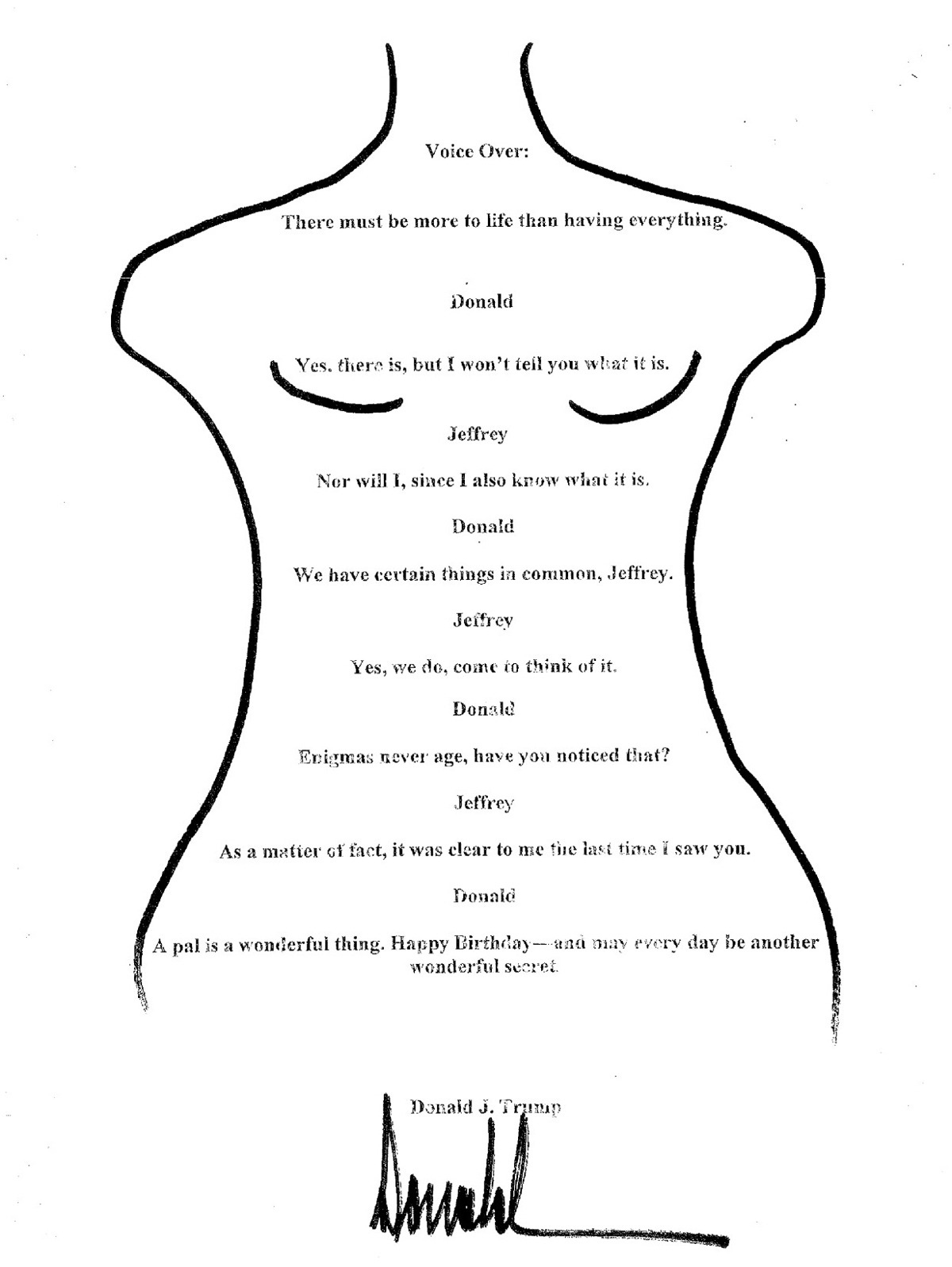U.S. President Donald Trump broke his silence Tuesday on the leak of a letter attributed to him and addressed to sex offender Jeffrey Epstein in 2003, on the occasion of his 50th birthday. Although the document includes a handwritten signature that says “Donald” and bears similarities with other signatures of the president, Trump refused to confirm or deny whether he wrote it: “It is a settled issue,” he said in a telephone interview with NBC News.
The letter, made public this week by the House Oversight Committee, is part of the so-called “birthday book” that the government turned over to Congress and that Epstein reportedly received from dozens of public figures in his close circle. The existence of the document had been previously revealed by The Wall Street Journal, but now political pressure has been added after the publication of its image.
The firm under scrutiny

The letter, which features lewd content and an informal tone, describes a fictitious conversation between Trump and Epstein.
Accompanied by a drawing of the silhouette of a naked woman and signed with the name “Donald”.
The signature includes an elongated line at the end, a characteristic detail in documents handwritten by the current president during his private life.
Although Trump flatly denied his authorship – “I can’t draw,” he claimed in self-defense – The New York Times analyzed multiple archived letters sent by Trump between 1987 and 2001, and detected similar graphic patterns.
According to that investigation, when Trump signed personal notes, he usually did so only with his first name, without initials or last name, and with a long final stroke, just as it appears in the missive dedicated to Epstein.
Change of signature according to the context?
The Times analysis also highlights that Trump signs differently as president than he did as a businessman or public figure.
During his years as a mogul in New York, his personal signatures were less formal and more visually expressive.
In contrast, recent presidential rubrics-such as those compared by Deputy Chief of Staff Taylor Budowich-tend to be more rigid, full-name and unadorned.
Budowich insisted that the signing of the letter to Epstein does not correspond to the current presidential style.
Political context and tensions with the rank and file
The resurfacing of the Epstein case – who died in prison in 2019 after being convicted of underage prostitution – has reignited tensions between the Justice Department and the MAGA base, which is demanding transparency about ties between Epstein and powerful figures.
Trump has in the past fueled theories pointing to a protection ring for elites implicated in sex crimes.
His supporters now see this letter as evidence that deserves to be clarified.
The transfer of files to Congress came after the Justice Department announced in July that it would not disclose further details of the so-called Epstein file.
This unleashed a wave of pressure from Republican sectors.
The leak of this letter has once again put Trump at the center of controversy.
This time for his silence and evasiveness in the face of possible personal evidence.
Meanwhile, Democratic congressmen and advocates for victims of sexual exploitation are demanding that all contributions contained in Epstein’s birthday book be thoroughly analyzed.
To determine whether other public figures also signed or sent inappropriate messages.
For more information, visit QuéOnnda.com.






















